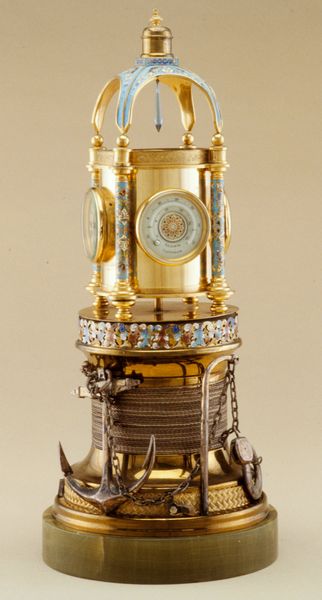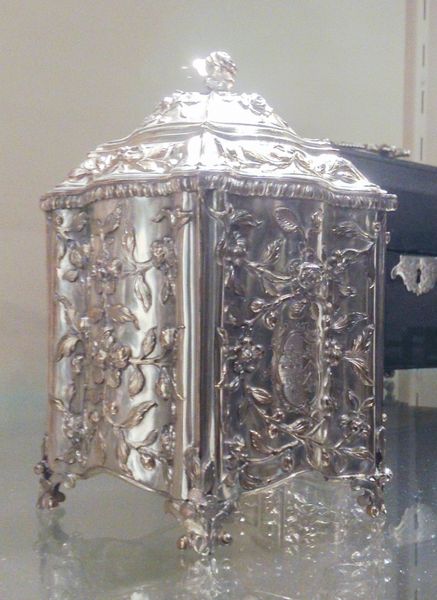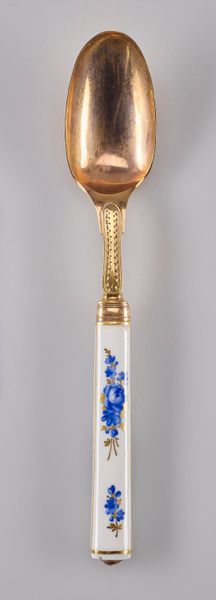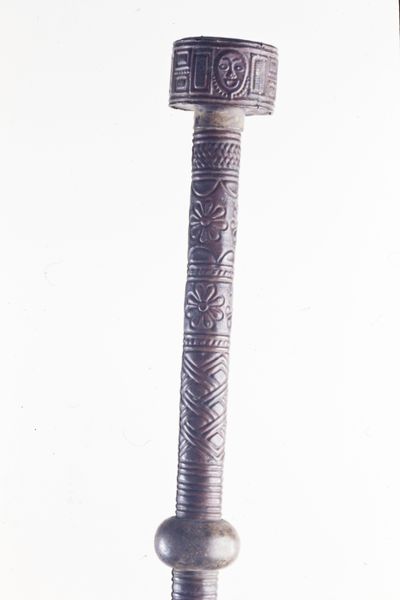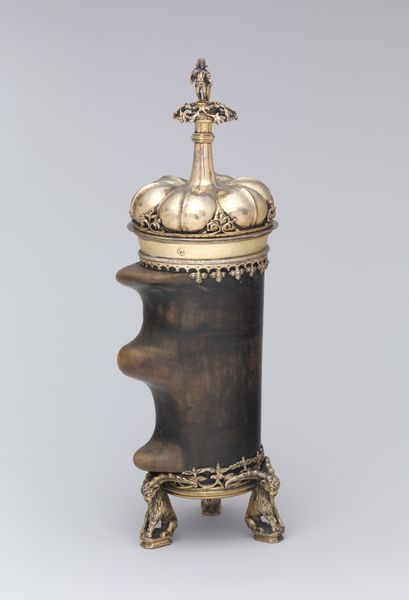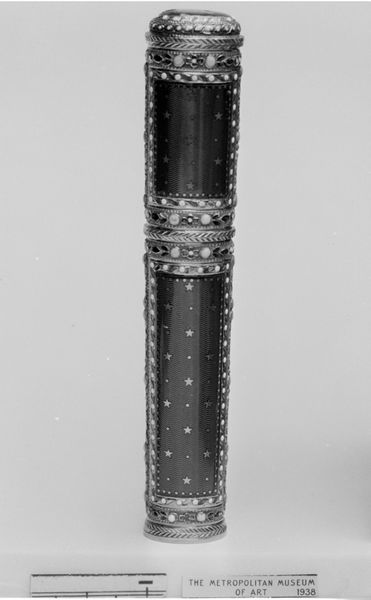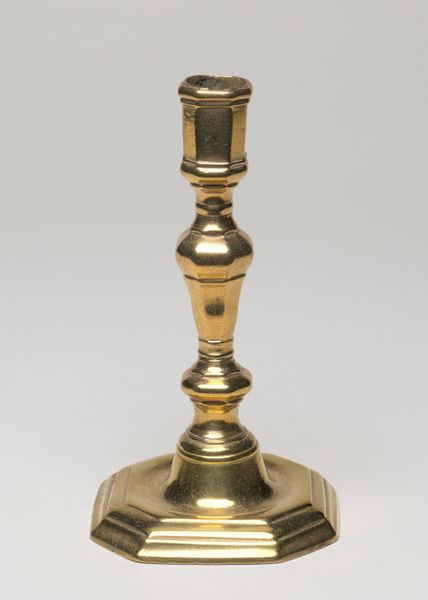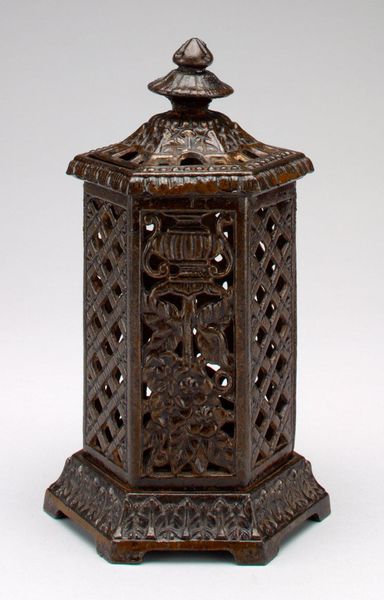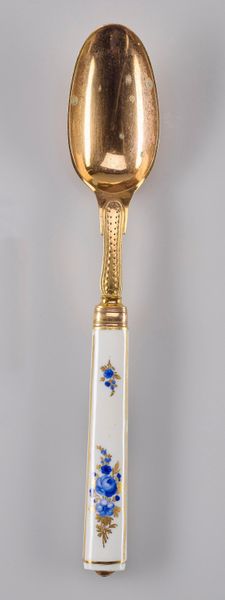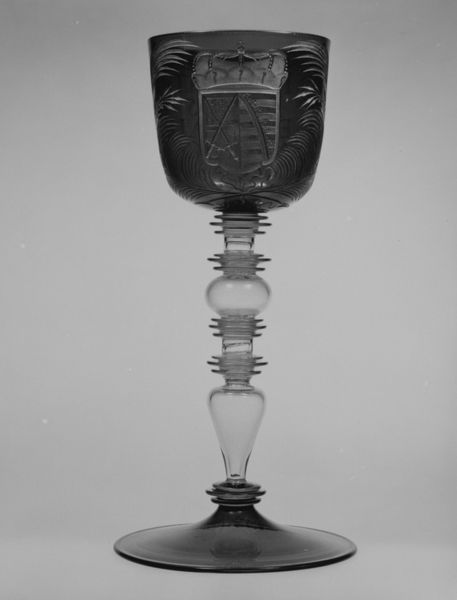
Sealing wax case (étui) 1782 - 1783
0:00
0:00
Dimensions: H. 4 5/8 in. (11.7cm)
Copyright: Public Domain
Editor: This is a sealing wax case, or "étui," crafted between 1782 and 1783 by Nicolas-Jean-Baptiste Choconain-Delauney. It's currently housed at the Met. Its small size is charming, and the intricate gold work really catches the eye. What story does it tell? Curator: Consider how an object like this reflects power dynamics. Who could afford such luxury? And what messages were being sealed with such ceremony? This isn’t just about aesthetics; it speaks to a highly stratified society. It prompts questions about access to information and control over communication. Do you see it as a symbol of privilege? Editor: Absolutely, it reeks of exclusivity. The details are beautiful, but almost excessively so. I suppose I hadn't considered its role in controlling the flow of information. How would it have felt to be excluded from these sealed communications? Curator: Precisely. Now, think about the imagery. The vignettes could depict idealized versions of power and perhaps obscured the realities of social unrest brewing at the time. What do you make of its function juxtaposed with its ornamental character? Editor: It's like hiding power behind beauty. This little object embodies the growing social divide right before the revolution. Looking at it now, it’s hard not to see it as a symbol of the decadence that fueled such dramatic change. Curator: Exactly. It's through this critical lens we can unveil the intricate dialogues between art history and socio-political contexts. Each delicate curve echoes a broader narrative about identity and control. It makes you think, doesn't it? Editor: It certainly does. Thanks to that perspective, I’m looking at it completely differently. It's much more than just a pretty object.
Comments
No comments
Be the first to comment and join the conversation on the ultimate creative platform.

